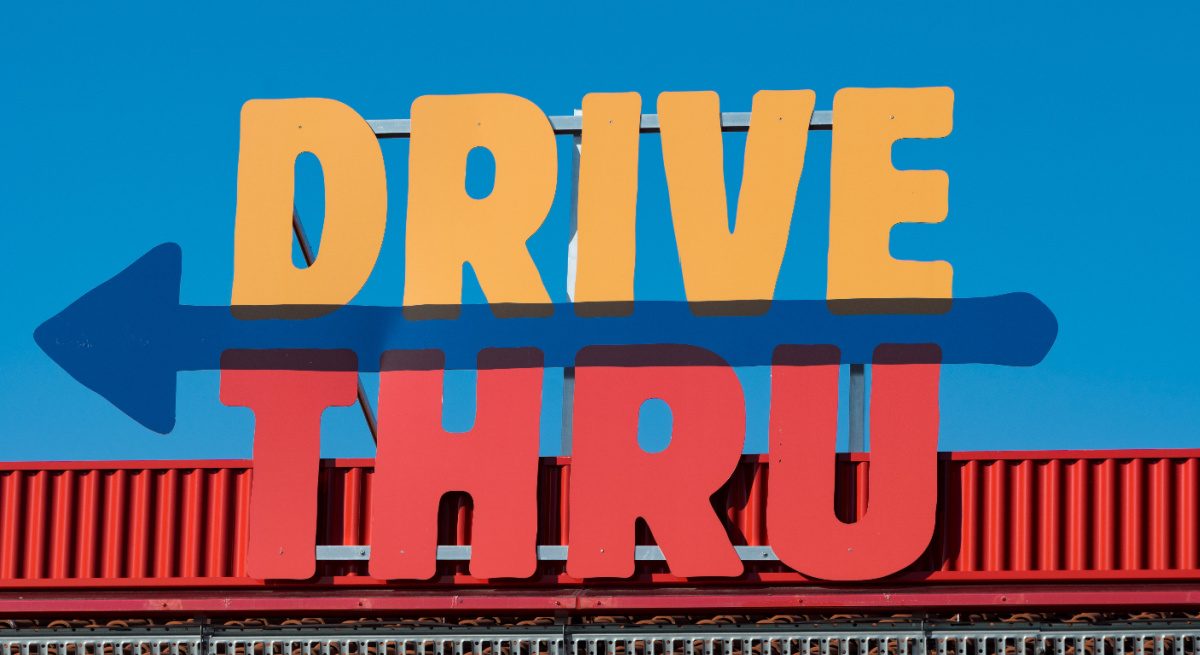Top Drive-Thru Tech for Keeping Guests – and Employees – Happy
4 Min Read By Chris Siefken
In the beginning of 2020, no one could have predicted where the restaurant and quick service restaurant (QSR) industry would be today. When the pandemic hit and indoor dining was prohibited, the demand for online ordering, curbside pickup and drive-thru usage skyrocketed. Drive-thru usage increased more than 150 percent for some QSRs since Covid-19 began, according to Xenial data. But as restrictions on indoor dining have lifted, long lines at drive-thrus continue because QSRs are grappling with a new problem: labor shortages. According to the National Restaurant Association, employment at eating and drinking establishments is 12 percent short of pre-pandemic levels, leaving many employees feeling stressed and burned out in the face of often unrelenting customer demand.
This means that restaurant owners and managers are scrambling to find and hire new staff, but savvy operators are turning to technology to not only augment existing staff, but alleviate employee stress as well. Automation and innovation are too often viewed in the context of replacing restaurant workers, but real value lies in their ability to retain staff and reduce turnover (which hovers between 130 percent and 150 percent) by enabling manageable workloads and allowing workers to focus more on the guest experience.
Four Tech Solutions to Improve Guest and Employee Experiences
As QSRs continue to evolve their technology capabilities, it’s important to look beyond the obvious options, like mobile app ordering and online delivery. Today, brands are establishing an even more technology-forward experience that meets customers in new places, while preserving quality, personalization and safety for guests and staff. Here are four top technologies that can reshape the drive-thru, enhancing the employee and guest experience while boosting the bottom line.
AI Voice Automation
Artificial intelligence (AI)-driven voice ordering technology implemented at the drive-thru has become a leading investment opportunity for forward thinking QSRs. By harnessing the power of AI-powered voice technology, things like consistent upsell recommendations can be made to increase ticket averages and provide consistent metrics. Importantly, employees are freed up to fulfill orders more quickly and accurately, allowing for increased speed of service. Turning the drive-thru into an automation opportunity isn’t only potentially better for guests, but can also be a better experience for employees as well. Customer interaction during the order taking process is among the most stressful and least fulfilling aspects of the employee experience. Enabling workers to hand this task over to an automated system – overriding the voice bot only when there’s a specific issue – creates a more attractive overall work environment.
Camera-Based Drive-Thru Timing
As the pandemic has changed operations and introduced more linebusting solutions, a new challenge has emerged: increased difficulty measuring speed of service. To counter this, there are new timing solutions powered by cameras and computer vision, a form of artificial intelligence. A guest’s vehicle can be recognized based on its drive-thru location, color, make and model. Cameras can serve a number of functions that streamline and automate guest service. An AI-powered suggestive selling engine paired with cameras can also help customize offerings and recommendations presented by the voice bot or displayed on digital menu boards. A minivan, for example, might be offered promotions from the kid’s menu. The ability to predict customer preferences and satisfy their needs not only improves their experience, but also increases opportunities to increase check averages and reduce the need for team members to interact with guests.
What’s more, when paired with a timer, cameras can also display relative car location on a crew-facing screen and improve service times by encouraging drive-thru crew competitions among other restaurants. Timing also helps brands understand service metrics and improve issues and bottlenecks to optimize staffing and guest experiences at each location. A camera-based system can also better manage dual lane drive thrus with merge points, automatically rearranging customers’ orders on kitchen and POS screens, based on the order of cars in the line, to ensure smooth operations.
Digital Menu Boards
At the end of 2020, drive-thru lanes accounted for 44 percent of off-premise orders across the entire restaurant industry. So, it’s no surprise many restaurants are heavily investing in reimagined, technology-enabled signage to grab and maintain customers’ attention. But digital menu boards can do more than just add a “wow” factor to the drive-thru experience. Industry studies show that 42 percent of guests are influenced by digital menu boards, and those guests tend to spend 20 percent more, per order. Moreover, with real-time menu customization and immediate order confirmation, digital menu boards can positively impact speed of service and accuracy, moving guests through the drive-thru line more quickly.
Touchless Payment Options
With the onset of COVID, the demand for touchless payments skyrocketed as both QSR staff and customers pushed for safer commerce options. And it’s likely not turning back. With contactless payment options, customers can scan QR codes displayed on a digital menu board or printed on their receipt in the restaurant and pay using their phone without any interaction with a staff member. Not only does this speed the overall process, it helps customers and employees maintain safe distances, while also saving staff members’ precious time. Offering no-touch payment options gives both guests and employees much desired speed, convenience and peace of mind.
Why the Employee Experience Matters
The pandemic delivered the restaurant industry a drastic set of changes to its operating model. One of the consistent elements has been the accelerated surge of technological advancements.
Thankfully, demand and consumer behavior are getting closer to a “return to normal.” While that’s great news for all of us, there are many new challenges to be tackled: dealing with the labor shortage, new and long-term customer behaviors and higher expectations of both guests and staff. Those restaurant operators that leverage technology-driven innovation to enhance both the guest and employee experiences can help alleviate short-term staffing challenges, while also positioning themselves for long-term success as consumer habits continue trending toward acceptance of automation.


